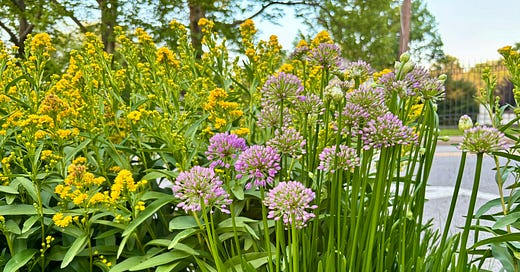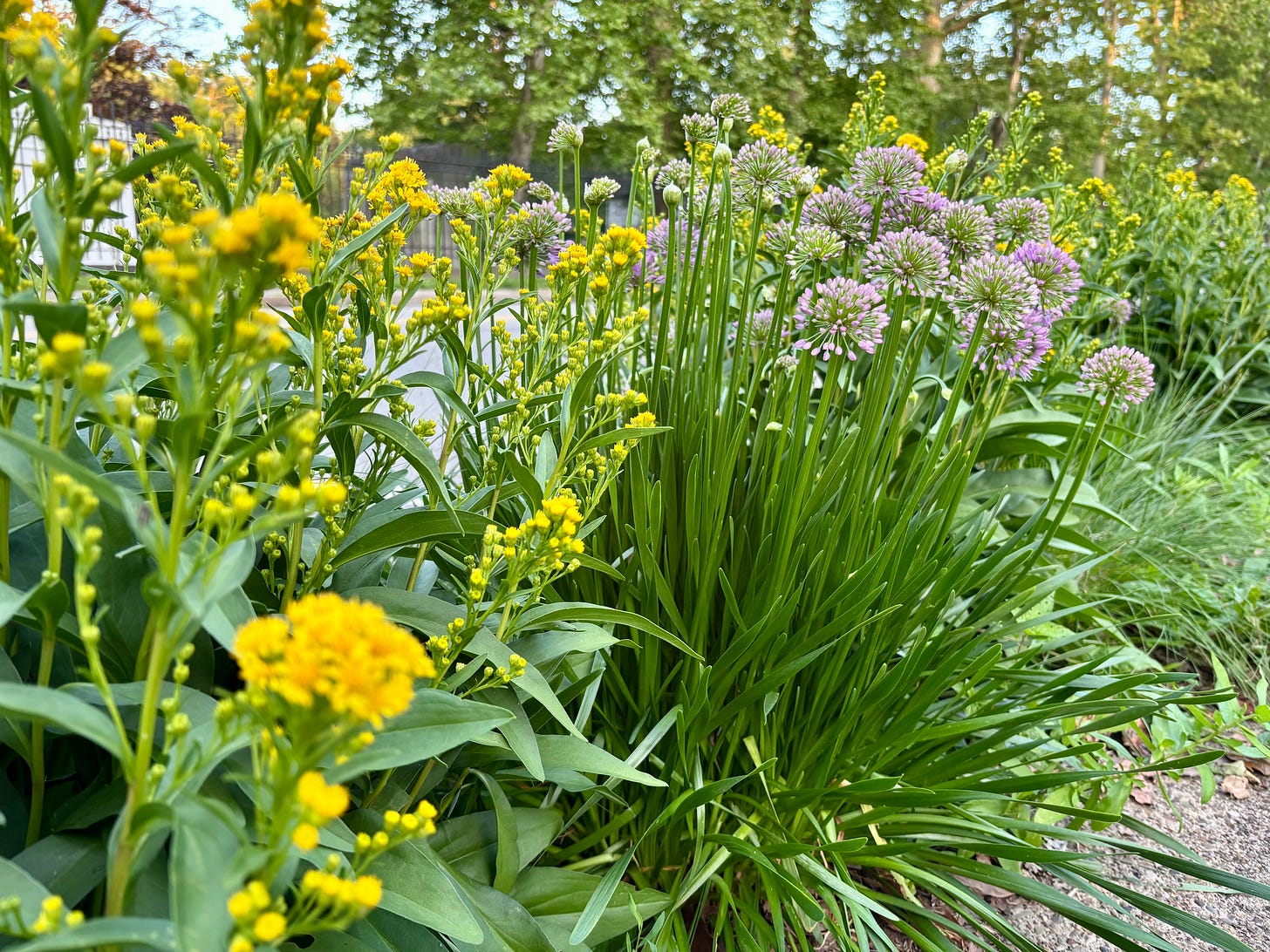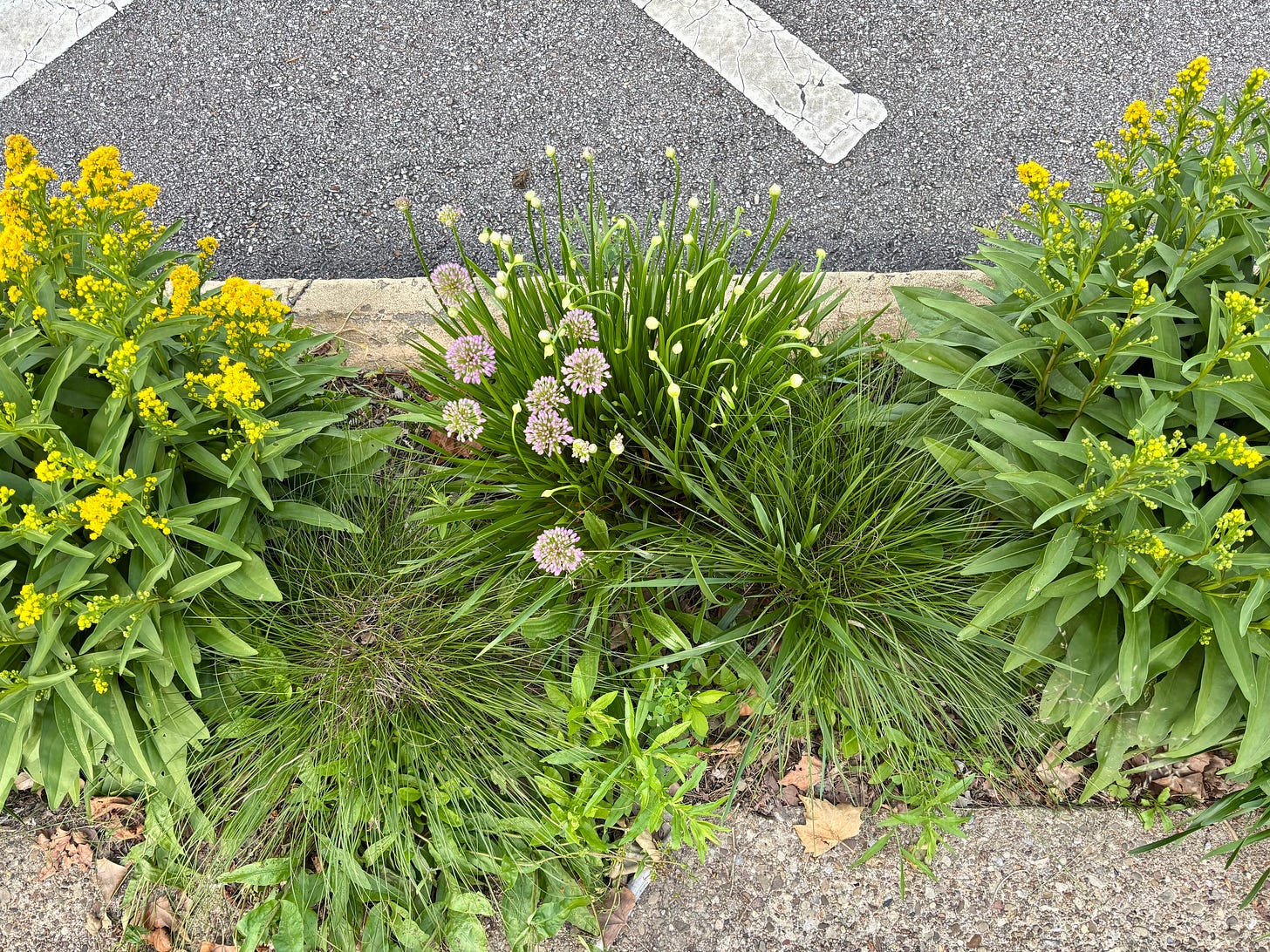Is the allium watching us? Does it appreciate when I’m weeding around it? Can it sense when a dog pees on it? These are the thoughts I’ve been having since I started reading Zoë Schlanger’s The Light Eaters.
Schlanger’s book introduces readers to the latest controversies in botanical research, where scientists are grappling with plant “intelligence” and “communication” and what that means when it comes to plant life.
She writes of plant ecologist Ernesto Gianoli who was studying plants in the Chilean rainforest when he realized that a vine, Boquila trifoliolata, was doing something unusual. Depending on which tree or shrub or fern it was growing by, the boquila vine could grow leaves that mimicked the leaves of the nearby plants. A boquila vine growing by a maidenhair fern would have leaves that look just like the fronds of that fern. A boquila vine growing on a tree with big glossy leaves will grow matching foliage. According to Gianoli, the vine can mimic over twenty different plants. How it mimics these plants is a mystery.
Schlanger also writes about Nasa poissoniana, a plant with striking flowers that she compares to “a sci-fi laser-beam launcher,” that seems to be able to remember the habits of bees. Depending on how often bees are pollinating a plant, the flower will lift a pollen-packed stamen in time for its next expected visit. In an experiment scientists had two groups of the Nasa poissoniana – one group was pollinated every fifteen minutes and the other group was pollinated every forty-five minutes. Within a day, the flowers noticed the pattern and would send up a new stamen accordingly.
A flowering plant may not have a brain but it seems to be doing something awfully close to thinking. A vine doesn’t have eyes as we define them yet somehow it knows what the surrounding leaves look like.
Most of the allium millenium planted in our hell strip aren’t blooming but a few of them are. And all those blooming alliums happen to be growing right next to the seaside goldenrod, which just started blooming this week.
The blooms on the alliums that are at the other end of the hell strip are still firmly closed. I might not have thought much about this a few weeks ago but now – thanks to The Light Eaters – I can’t help but come up with hypotheses. Perhaps this allium somehow recognizes the blooms of the goldenrod? Is it rushing to flower to try to take advantage of the pollinators already present? Can the allium hear the buzz of bees nearby and that triggers an early bloom? Is the goldenrod sending a message to the allium proposing a parallel bloom to aid in their mutual pollination?
Or is there something different in the soil or light or moisture conditions and I’m just thinking about it too much? I suspect that none of my theories are correct and that there’s more going on than I could ever imagine.
I’m only halfway through The Light Eaters and, so far, my main takeaway is that us humans might be the dumbest ones here. Plants are so awesome and multi-faceted and complex and we might not even have the brain power to make sense of it. And, honestly, that’s pretty exciting to think about.
Is anyone else reading The Light Eaters? Or have you noticed the plants in your yards reacting to other plants or insects? Or trying to communicate with you? I’d love to hear about it.
And one more thing: The Pittsburgh Symphony Association is hosting their annual Symphony Splendor Garden Tour this Sunday, June 29th in Fox Chapel. I got a sneak preview earlier this week on KDKA.
You can find more information about the tour here.











Kip is good friends with those alliums, maybe he has some insights
I'm definitely getting this book! I noticed years ago that certain weeds near my non-weed plants had some characteristics that mimicked the proximate "keepers". Since that time, I've believed that plants have a life we only think we know about. I remain open to this notion, and I continue to see tiny evidences of it here and there. Thanks so much for the book recommendation; it's just the sort of authoritative source that my subconscious has been watching for. 😎